About the Deviser Rosetta Vessel
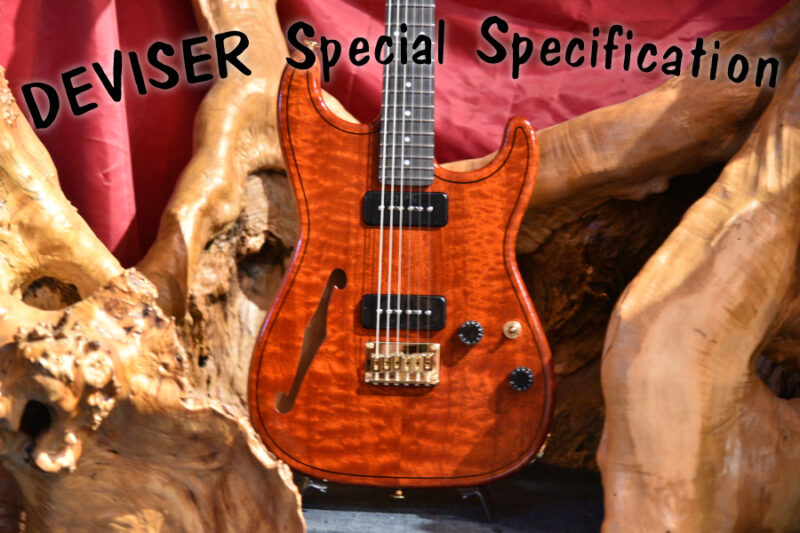
The “Deviser Special Specification Rosetta” series was originally produced for a short period of fewer than two years, from April 2005 to January 2007. Only 243 units were produced at that time. After production ended, the popularity of the Rosetta series slowly increased on the used market, and we received many requests for the resumption of production.
In 2021, the 30th anniversary of Deviser’s founding, we decided to resume production of the Rosseta series for the first time in 14 years with the desire to respond to users’ voices.
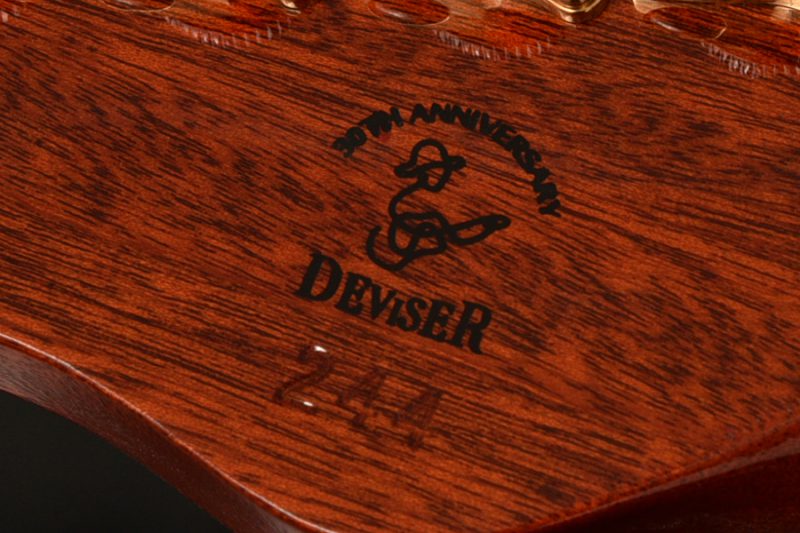
Rosetta’s Features
The “Deviser Special Specification Rosetta” series, was brought back in 2021, it retains the basic design features such as the F-hole hollow body construction and 25-inch scale but has been brushed up in every detail.
Hollowbody with F-holes and accent lines
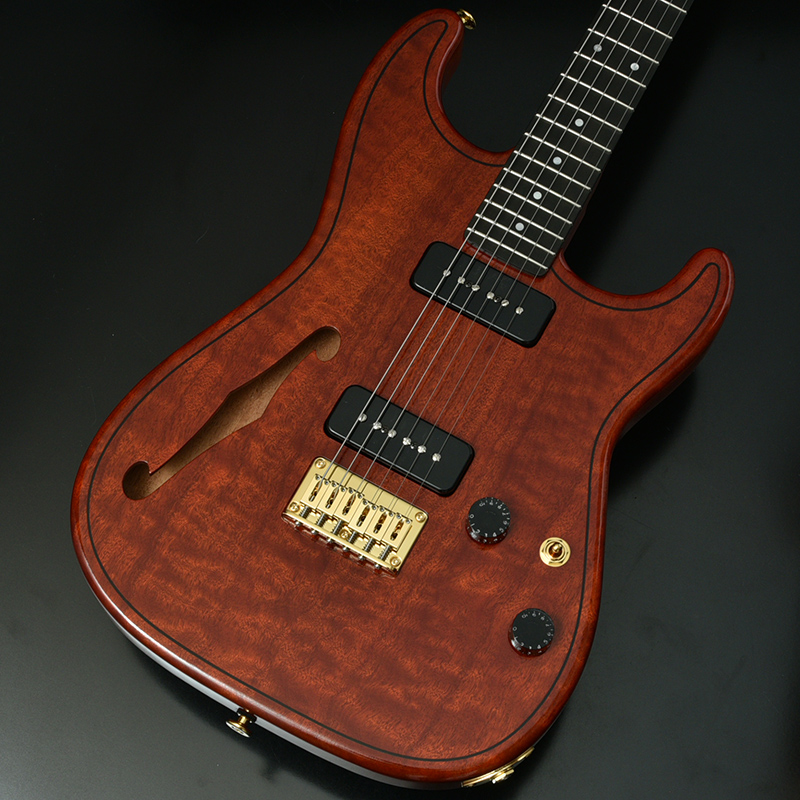
The simple design with no pickguard or control panel is accented by the F-holes and the lines around the outside of the body, which are distinctive features. The semi-hollow body construction with a hollowed-out interior makes the entire guitar lightweight and allows for comfortable playing for extended periods of time.
25-inch scale that produces an exquisite sense of tension

The 25″ scale is adopted, which is between the so-called “long scale (25 1/2″)” and “medium scale (24 3/4″)”. The slightly looser tension than one might expect from the body shape and bolt-on construction creates a unique “loose” feel. This guitar is also recommended for players who feel that long-scale guitars have too much tension and make choking difficult.
Mojotone P-90 Classic & Hot Rod
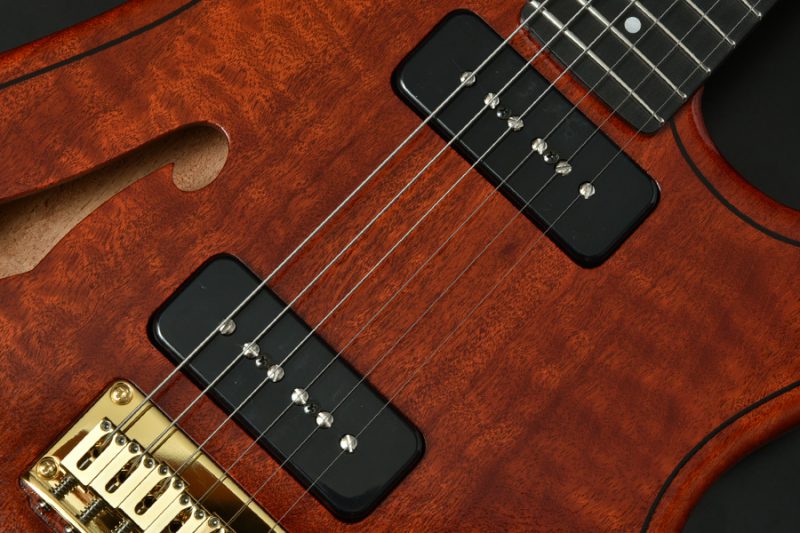
P-90 type pickups from Mojotone, an American hand-wired pickup manufacturer, are used. The rear position is a slightly higher output Hot Rod model to balance with the front. It has both an edgy attack and a rounded, warm tone, and outputs the player’s nuances in a rich and expressive way.
Side position by luminous material Luminray
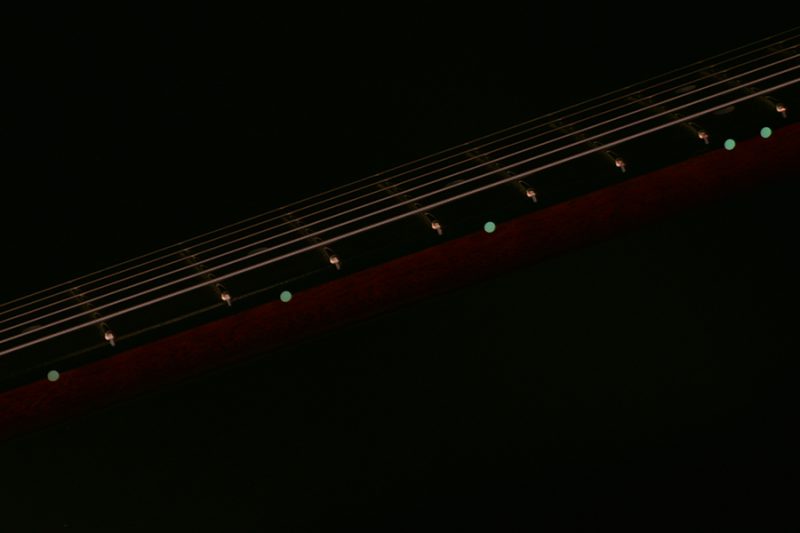
The position marks on the fingerboard side have been made of luminescent material since the 2000s model, but for the latest release in 2021, “Luminray” with higher luminescence performance was adopted. This is a specification that is very popular at live performances, where the stage is often very dark for production purposes.
“Deviser Special Specification” Headstock Logo
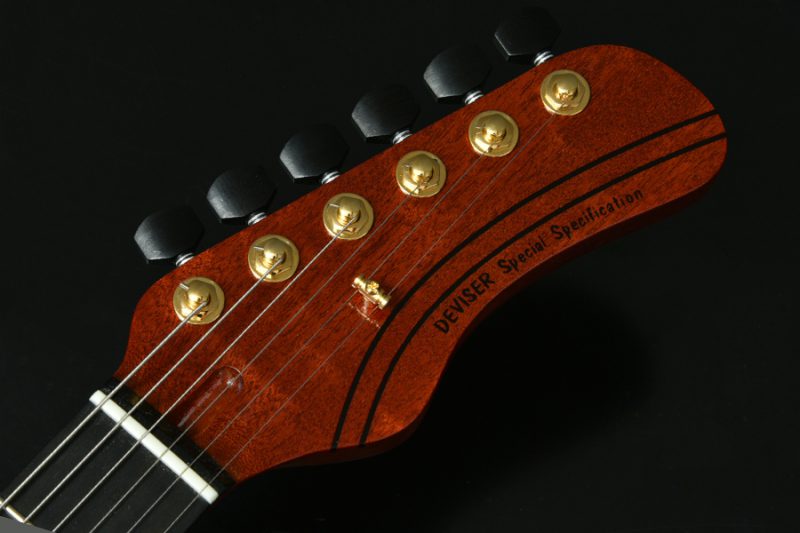
We have reproduced the hand-drawn logo that was also used in the 2000s. The black lines that are also placed around the perimeter of the body also accentuate the design on the head.
The truss rod adjustment groove has been extended to the wider size used in the Momose brand, making rod adjustment easier and allowing the truss rod nut to be replaced for a more user-friendly specification.
Message from Yuji Takatori, Rosetta Craftsman
Yuji Takatori, the craftsman who has been manufacturing the Rosetta series since the 2000s, will again be in charge of manufacturing the new editions from 2021 onward.
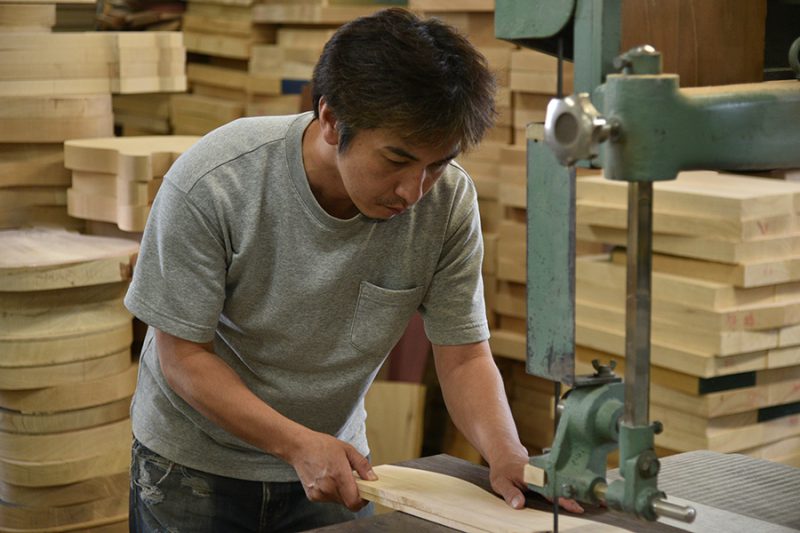
He oversees the Aska factory’s woodworking department, which includes the Momose brand and the Bacchus Handmade series, and is also involved in manufacturing himself.
-Memories of the past lot production in the 2000s
I was in charge of woodworking almost all Rosetta models at that time, and as a young man who joined the company in 2002, the production of Rosetta models was a series of new challenges for me, and I have fond memories of the experience I gained as a craftsman. The mahogany neck of the Vessel is more flexible than maple and requires proper seasoning and processing, so I had to carefully watch the condition of the neck as I built it. Now that we have more knowledge and experience, we are able to select and dry the neck material more appropriately, and the necks are more stable than before.
Rosetta’s design
I liked the design of the one-pointed line on the head and body from that time. I think this accentuates and tightens the simple body. The head logo was not a ready-made font but was specially created by Asuka’s president for a designer. At that time, the “Deviser Special Specification” brand had a strong custom element, and we could challenge various things such as show models with Japanese paper pasted on them. It was a lot of work to make those guitars, but I think it was a great honor for the craftsmen.
Now that production has resumed, I am secretly planning to challenge various things in the future.
-Improvements in the new production
We reviewed the designs for the re-production and made improvements to some of the details that were bothering us while making the instrument at that time. For example, the truss rod adjustment hole was enlarged to make it easier to adjust the truss rod. The side positions are now covered with Luminray, a luminescent material that glows in the dark; we used a different kind of luminescent material in the 2000s, but Luminray is brighter and more practical. The sound has also evolved from the original model by using Mojotone pickups made in the U.S.A., in which Aska Factory has full confidence.
The Rosetta model has many unusual specifications, and back in the 2000s, I had a hard time making it, but now that I have more experience and my skills have improved, I can enjoy making it in the good sense of the word. It became more and more interesting as I made it, and I became more confident that it would be a better guitar. I want all kinds of guitarists, both those who knew Rosetta back then and those who did not, to touch it.


